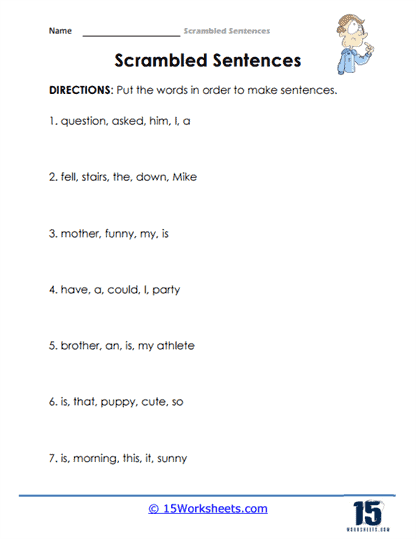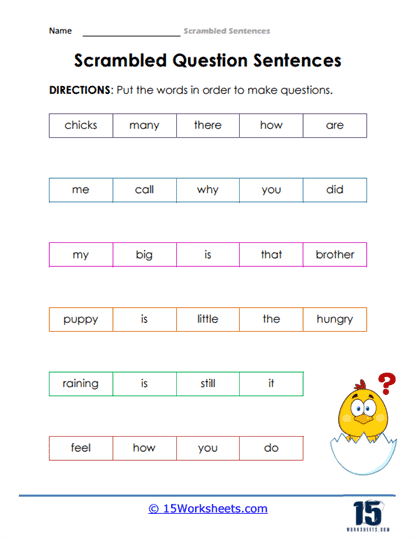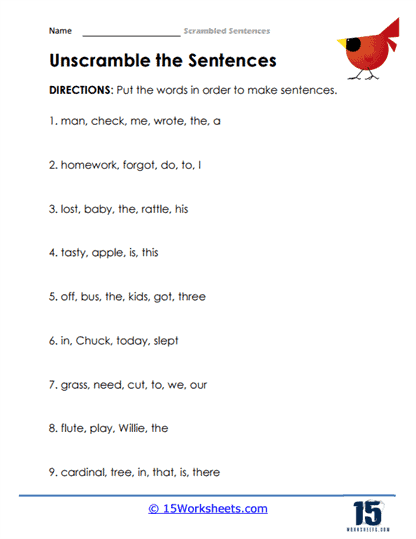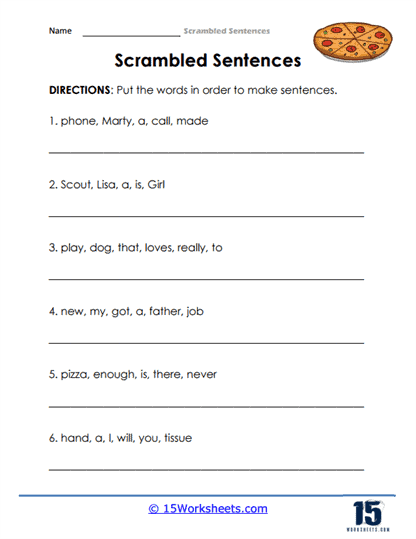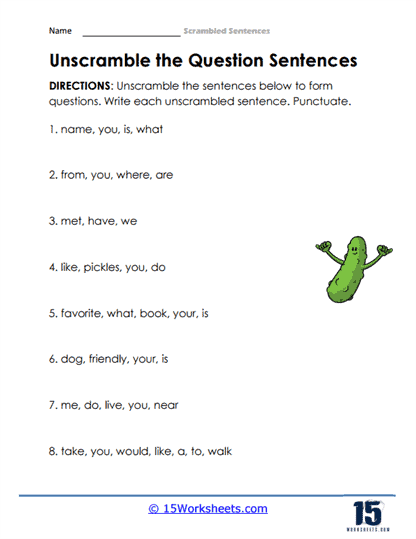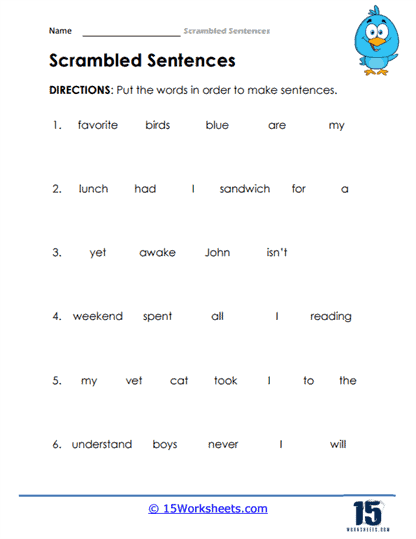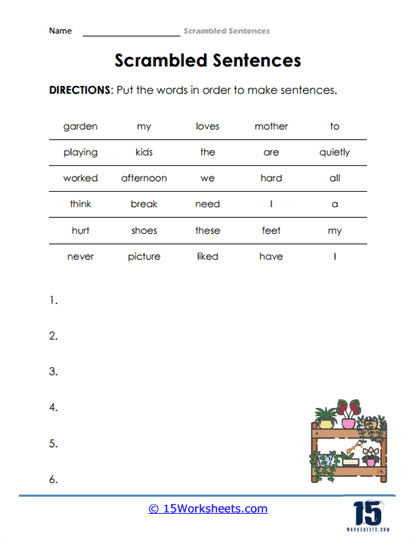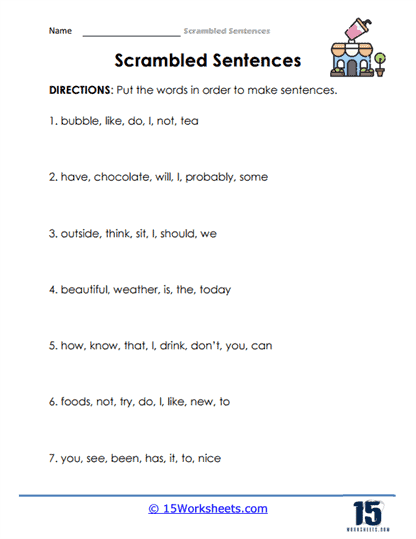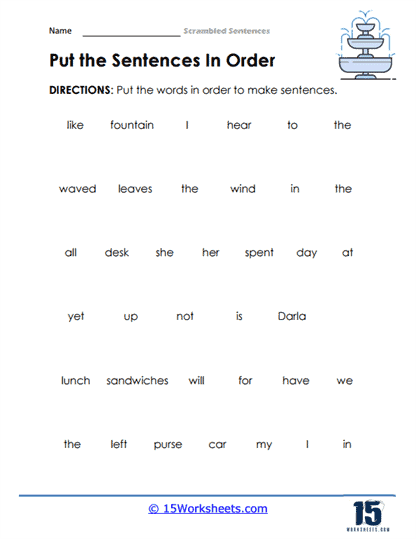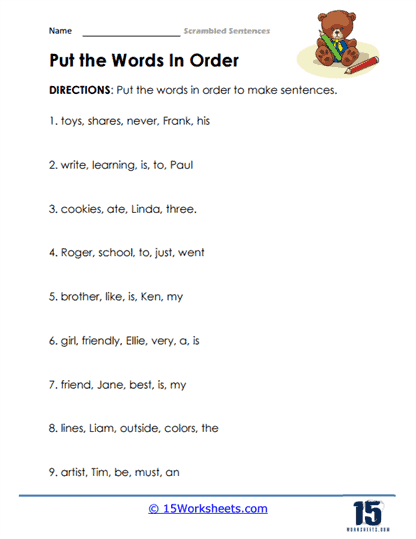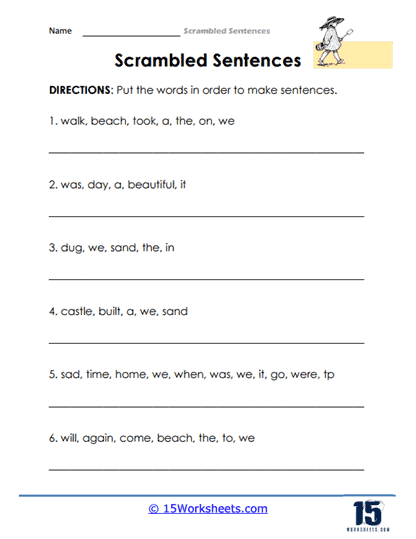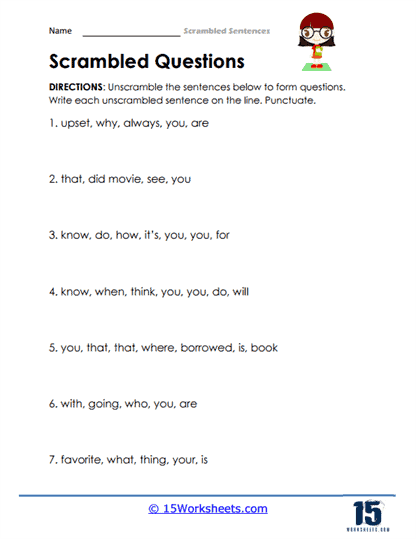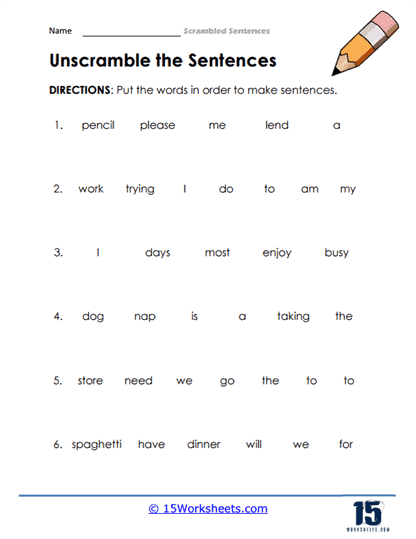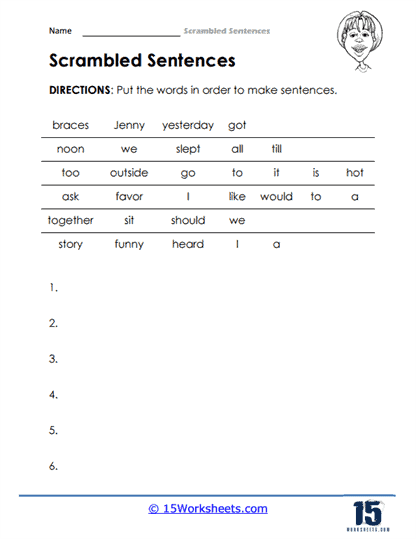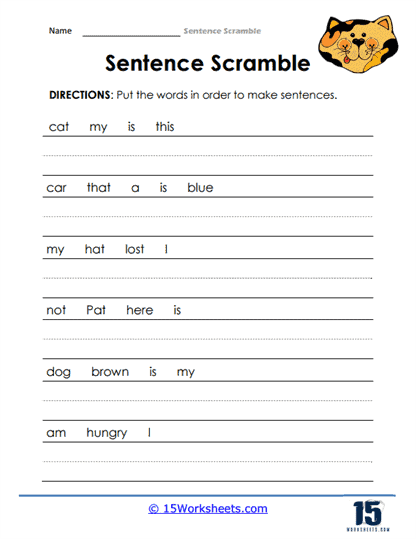Scrambled Sentences Worksheets
All About These 15 Worksheets
This series of 15 worksheets is an engaging and interactive resource designed to help students strengthen their sentence construction and language skills. These worksheets provide students with a fun and hands-on approach to unraveling scrambled sentences, improving their understanding of sentence structure, grammar rules, and vocabulary usage.
The range of exercises and activities challenge students to rearrange jumbled words into coherent and grammatically correct sentences. By engaging in this process, students develop their language skills, including syntax, word order, parts of speech, and contextual comprehension. Through these worksheets, students will:
- Sharpen their ability to recognize and apply correct sentence structures;
- Gain a deeper grasp of sentence components, verb tenses, subject-verb agreement, word forms, prepositions, and more;
- And develop their reading comprehension skills as they analyze the meaning and context of the sentence, considering how each word contributes to the overall message.
This series is suitable for students at various grade levels and can be integrated into language arts classes, ESL programs, or individual language practice. By using these worksheets, teachers provide their students with an interactive and engaging way to reinforce sentence structure, grammar rules, and vocabulary usage.
Through the varied exercises, students develop critical language skills, including sentence construction, grammar proficiency, contextual comprehension, and vocabulary acquisition. In summary, these worksheets foster a deeper understanding of language structures and improve overall writing and communication abilities. This Scrambled Sentences worksheets series enables students to unravel the puzzle of sentences, unlocking their language potential and enhancing their language fluency.
What Is a Scrambled Sentence?
Have you ever wondered how children learn to read comprehensions? There are a lot of processes involved, from learning to decode, understanding vocabulary and grammar, becoming fluent in English, and stringing words together to form a sentence structure.
For younger children, sentence structure is a challenging subject. They start off by understanding the components of a sentence and then go on to figure out how to put the words together to make them sound natural and fluent. For an elementary school child, this is not an easy task.
Sentence structure is crucial because it can change the entire meaning of the sentence if words are not put together properly. By learning sentence structure, children also develop writing skills. Scrambled sentences help students practice sentence structure.
Scrambled sentences help students work with punctuation, sight words, content, fluency, comprehension, and capitalization. When they are given parts of sentences to arrange together, they understand the format and meaning of the sentence as a whole, boosting their comprehension skills.
Scrambled sentence exercises are popular in the classroom because they are versatile and easy to use. They can be based around themes and can be used as a fun exercise in groups or given as individual homework for the child to attempt.
Usually, children love figuring out which word goes where and forming a sentence. You can use cards with different words on each and ask students to arrange them. The best part is that you can get as creative as you want so the children can make a story of their choice. Moreover, this activity can be used for first, second, or third-graders, depending on how you choose to customize the scrambled sentences.
Tips to Solve Scrambled Sentences
For lower elementary children, we recommend that they reassemble scrambled words only after they have had a chance to read the original sentence.
You can use a few sentences from their favorite storybook that they have read and listened to multiple times, as they will already have some prior knowledge of the words. Moreover, these sentences will have helped them form their basis of language, making them perfect for playing around with.
You can start with having three to five sentences of a story written on a chart or board.
For example:
- Our class went to a zoo.
- We saw many monkeys.
- We fed a lot of fish.
- We had candy floss and other snacks.
- We bought the leftover snacks back to school.
Step 1
Note down each sentence on a piece of paper. Then, cut the sentences off the paper so that they look like this:
Our class went to the zoo.
Step 2
Ask the students to read the sentences from the board and show them how you have cut out the first sentence. Explain to them that you
will mix the words up of this sentence so that they can piece it back together.
Step 3
Hide the paragraph on the board.
Step 4
Mix up the cards on a table so they are not in the correct order.
Step 5
Ask the children to work in groups so that they can put the words in the correct order.
Step 6
When they are finished, uncover the paragraph on the board and let them compare their work with the original work. If there are any errors, make sure to address them and break them down so that your students understand exactly what they did wrong.
Step 7
Do the same with the rest of the sentences. Once the children get the hang of this exercise, allow them to attempt it individually.

